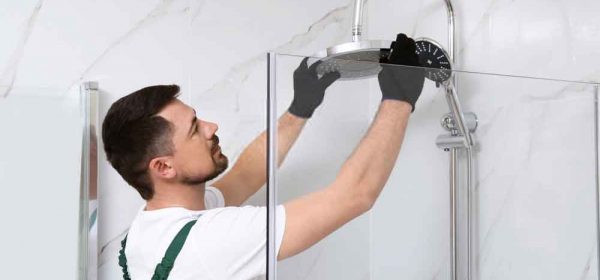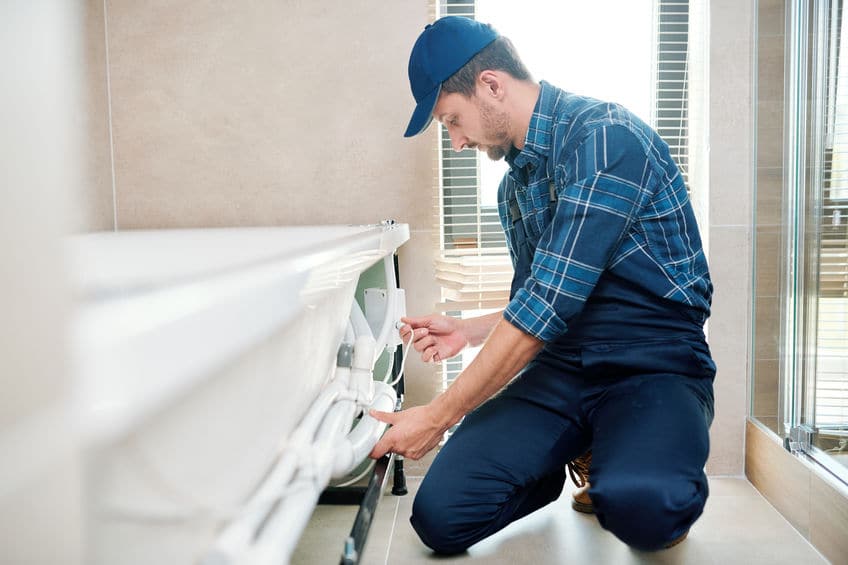5 Solutions to Acrylic Washroom Issues
5 Solutions to Acrylic Washroom Issues
Blog Article
{Suggested Site We have stumbled on this article involving Things To Look Out for Before Hiring a Plumbing Company listed below on the net and felt it made perfect sense to write about it with you here. We recommend that you clean your acrylic bathing product made of Delta ProCrylic or Acrylic with Innovex Technology with non-abrasive soaps and cleaners, such as: When it’s time to clean, always use a terry cloth towel, soft cloth or sponge to avoid scratching the acrylic surface. Don’t use abrasive scrubbing pads, steel wool or sponges, cause permanent damage to the acrylic material. If you use a drain cleaner or clog remover, be sure to rinse thoroughly with water so no product is left standing near the drain. Some chemicals and cleaners may deteriorate acrylic surfaces, causing cracks and, potentially, property damage. To avoid this, don’t use cleaning products that state on their label that they are not suitable for use on Acrylic, ABS, Polystyrene or Plastic. Be sure to check the label of any product before you apply it to the surface; it’s easier to avoid damage than to try to remedy it. Chemicals we do not recommend using to clean acrylic showers/tubs: When you’re ready to apply sealant, a little planning goes a long way. Pick up some painter’s tape and use it to mask off the seam to help make cleaning up easier. When you’re applying the bead, use a constant, steady speed to avoid an uneven finish. Use a caulk tool or a plastic spoon to work the sealant into the joint. Wetting the tool with denatured alcohol will help create a smooth finish. Follow the directions on the back of the tube for cure time. Certain chemicals and cleaners may deteriorate acrylic surfaces, causing cracks and, potentially, property damage. After you’re finished applying it, clean up the product surface and remove any excess sealant with denatured alcohol. Don’t use solvents (turpentine, lacquer thinner, mineral spirits, paint thinner, MEK, xylene, acetone, naphtha, etc.) that can wreak havoc on an acrylic surface. With a little care and consideration, you can prevent damage to your acrylic shower or tub. Keep a supply of soft cloths handy and remove any damaging products or abrasive scrubbing items from the bathroom to ensure they aren’t around when it’s time to clean. https://www.deltafaucet.com/design-innovation/inspiredliving/how-to-clean-acrylic-shower Do you appreciate reading about Finding the Right Plumbing Expert? Make a remark below. We would be glad to know your opinion about this content. We hope to see you back again soon. Are you aware of somebody else who is inquisitive about the topic? Do not hesitate to share it. We enjoy reading our article about Things To Look Out for Before Hiring a Plumbing Company.
Polymer bathrooms, shower trays, and various other acrylic washroom ware have actually become more typical in shower rooms in current times. Thanks to contemporary chemistry we now have alternatives to enamel and ceramic products for washroom fixtures. These include different polers and also plastic products. Not as stylish and also resilient as enamel and also porcelain bathrooms as well as components, they are much more budget friendly and also offer quite much the very same fundamental objective. These materials are very easy to make, store, as well as transport and also in the occurrence of damage, they are conveniently fixed. Some common examples of damage to acrylic restroom components include discoloration, cracks, holes, and so on. Allow's have a look at several of these troubles and quick means of fixing them.Bathroom Staining
With prolonged use of acrylic bathrooms comes discoloration or discoloration. While some spots can be gotten rid of conveniently, using unique chemicals, others require that the bathroom be resprayed. Aromatherapy oils loosen the dirt in some situations thereby recovering the bathroom to its former splendor.Chemical Reactions
Occasionally, individuals try to repaint the whole surface of their acrylic bathroom on their own either because they do not like the color to hide blemishes. When they do not like the result, they apply paint cleaners. You must never make use of paint eliminator on acrylic baths. Paint eliminators do not react with the surface of metal baths, they ruin acrylic bathrooms irreversibly. This develops even more help the expert. The best strategy here is to call an expert for help with replacing the bathroom.Damaged shower or bathroom surface
Acrylic washroom components are not abrasion-resistant like enamel varieties. They are a lot more vulnerable to scrapes and also much less long lasting. Being a really soft material, acrylic scrapes can even be concealed without layer or filling. For these, you must seek specialist assistance for your bathroom repairs. As a prevention idea, avoid utilizing rough sponges when cleansing. Rather, you should utilize a basic fluid cleaner with a soft pad.Cracked Acrylic Baths
The life-span of acrylic and also fiberglass bathrooms depends on 15-20 years for shower pans and also bathrooms, typically. Fractures in an acrylic shower tray are possibly amongst the most convenient problems to repair for a fixing specialist. The very best component is you get to see the results practically quickly. This coincides for PVC, resin, as well as other such products. A minute fracture need to be attended to on time prior to it spreads out additional bring about more extreme damage. While these can be fixed on a spending plan tackily, a professional can help you get it finished with more finesse for a charge. Quick house repairs can be performed with epoxy materials but if the result ends up inadequately, this would certainly make the repair a lot more difficult for a specialist.
Polymer baths, shower trays, and also other acrylic bathroom ware have actually ended up being more common in shower rooms in current times. With extended use of acrylic bathrooms comes staining or discoloration. You need to never utilize paint eliminator on acrylic bathrooms. Paint cleaners do not react with the surface area of metal baths, they ruin acrylic baths irreversibly. The life-span of acrylic and also fiberglass baths is up to 15-20 years for shower frying pans as well as baths, generally.How to clean Acrylic shower
USE THESE NON-ABRASIVE CLEANERS
DO NOT USE THESE CLEANERS
Sealant Application Tips

Schedule Here